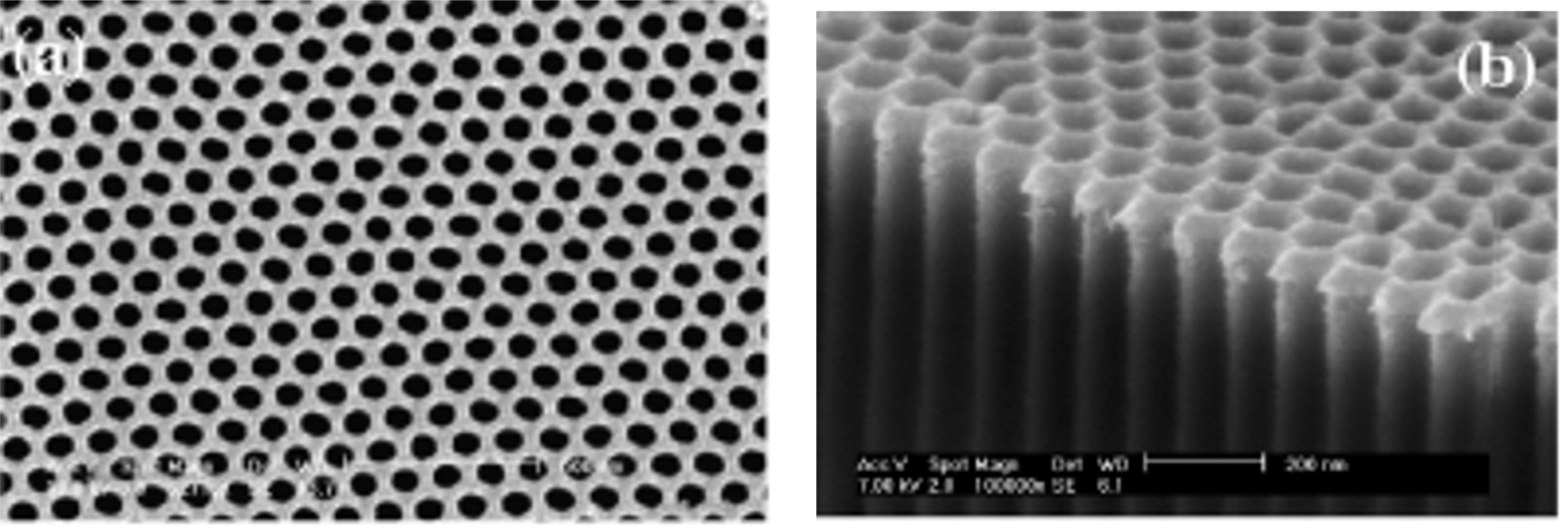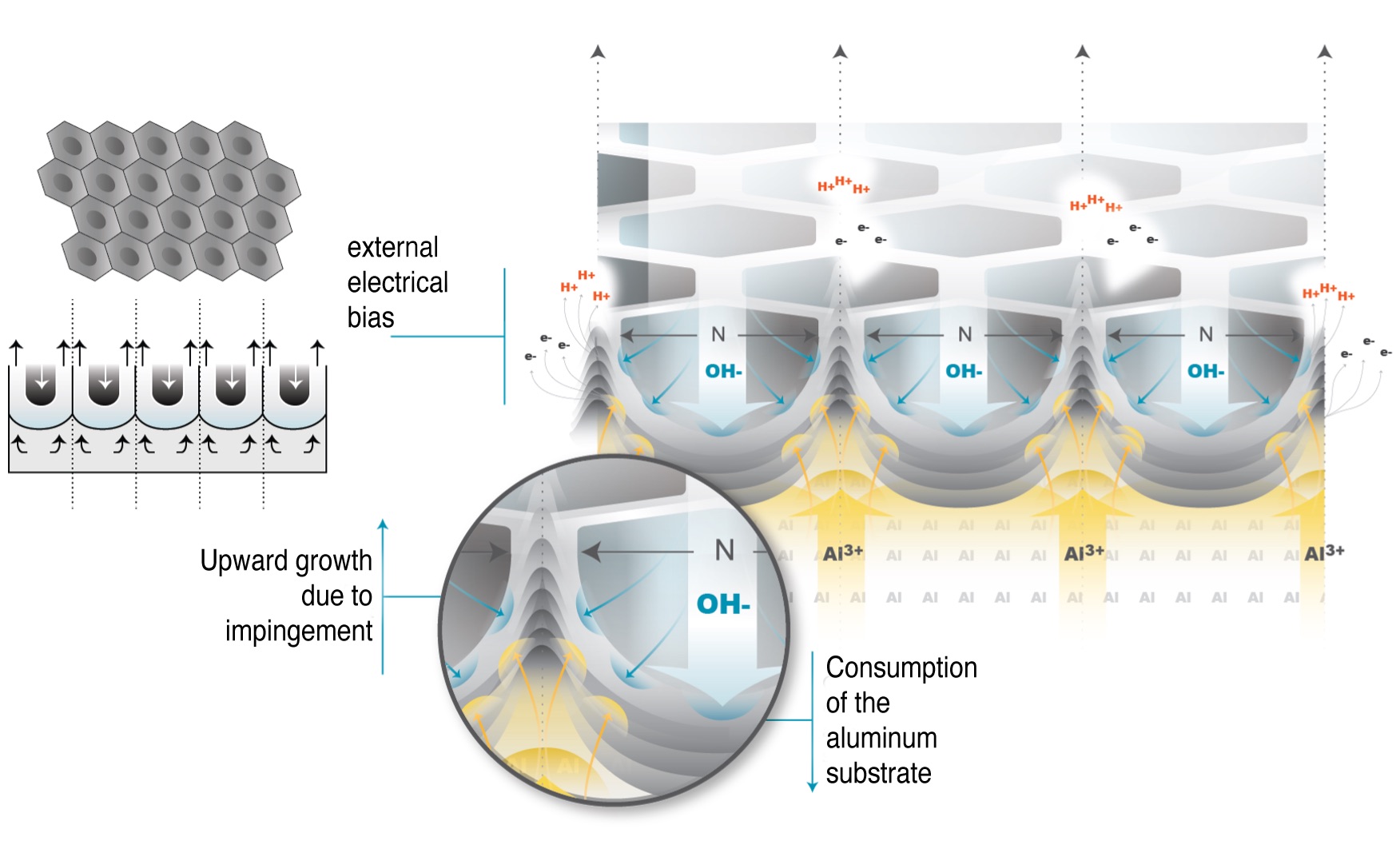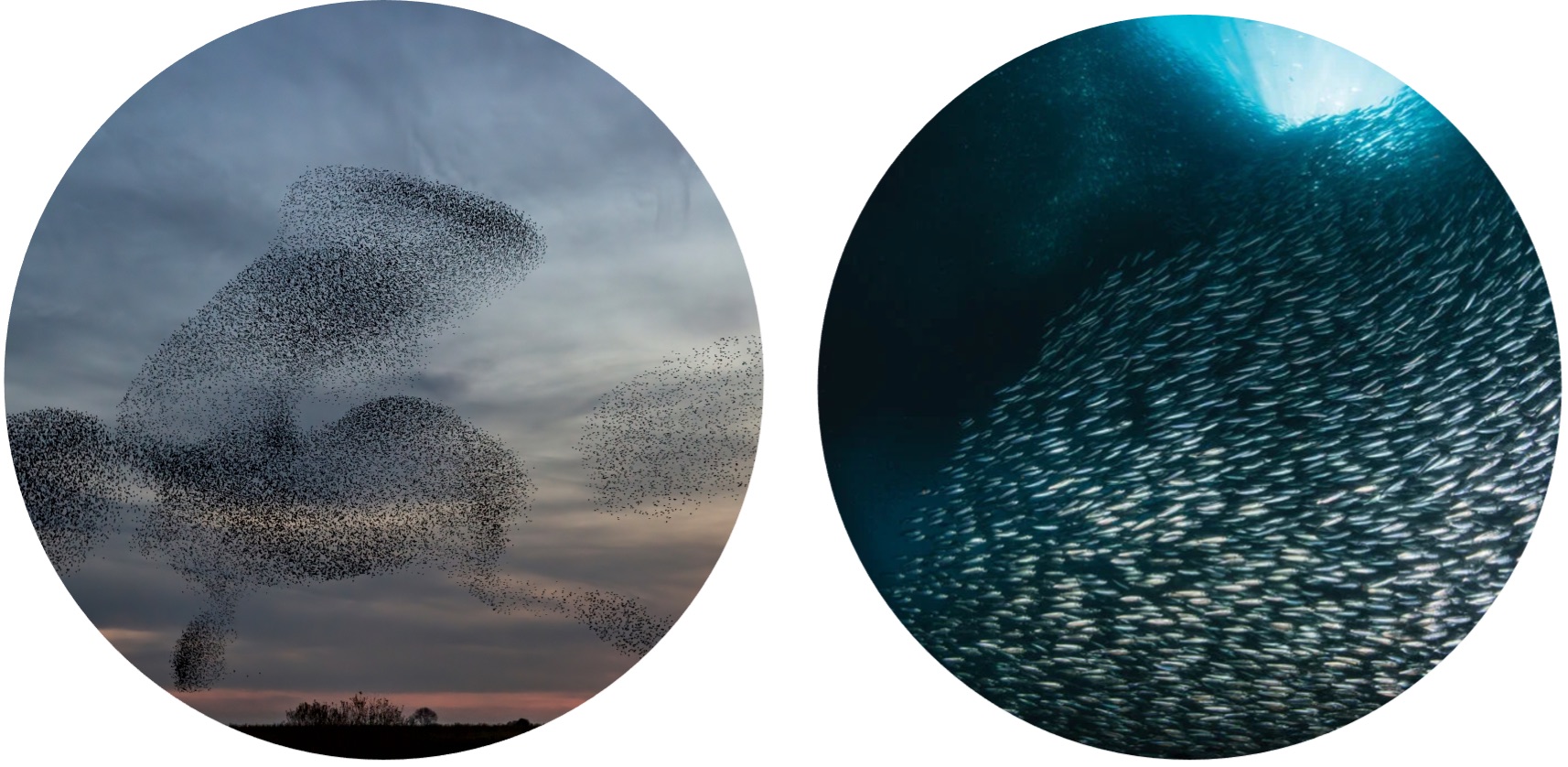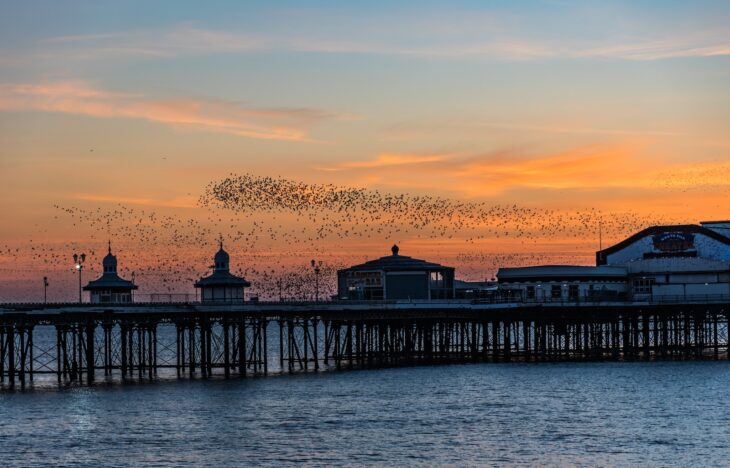By Jude Mary Runge, CompCote International.
Abstract
Investigation of the long-range order induced by polarization in non-equilibrium systems, such as anodizing, reveals interesting parallels in equilibrium systems with naturally occurring order. Important to network order is the inward transfer entropy of each individual member of the network. This energy establishes the distance between each network member, resulting in uniform outward transfer entropy that casts a virtual hexagonal polarization net, creating an integral living fabric that can move and flow with perfect synchronicity. From the smallest coral to the largest elk, systems of all sizes exhibit similarities that connect polarization to the order that forms when same-type species assemble and move—the understanding of which is important for the development of order in synthetic systems.
Introduction
In nature, when aluminum is exposed to the atmosphere, a passive oxide layer forms on the surface that is only a few nanometers thick. Oxidation proceeds on the exposed aluminum while the aluminum reacts (as the anode) with the atmosphere, which functions as the electrolyte. Without an applied electrical bias, the oxide layer grows in excess of a monolayer to an equilibrium thickness of a passive oxide layer and stops when the surface is reconstructed by the oxide. At which point, the dissolution at the interface by the atmosphere is equal to the rate of continued oxide growth at the aluminum surface, and the net reaction rate for passive layer formation is zero, which characterizes the formation of the passive layer as an equilibrium process.
In industry, the electrical bias is a necessary external component for the manufacturing process to form a porous oxide, making the applied current density the unique component for manufacturing anodic aluminum oxide (AAO) and an integral engineering component of the anodizing process. With applied constant current density, a non-equilibrium steady state process develops, enabling continued oxide growth after the surface is reconstructed by the oxide.
Polarization develops an ordered charge density on the anode surface that overrides the energy of the surface phenomena on the aluminum surface that typically determines the points at which the equilibrium oxide nucleates. Polarization not only sets nucleation, it produces regular spacing of the oxide nuclei, which develop into discrete oxide elements that comprise a highly ordered AAO. Therefore, polarization is not only key to the organization of charge on the surface, it is the source for the structural order of the AAO (Figure 1).

Network order that is both amazing and beautiful is routinely observed in nature. Rather than originating from a polarized surface, order in self-assembled living networks—such as coral reefs, bee hives, schools of fish, or murmurations of birds—originate at the polarized center of each network member. Fascinating parallels to AAO with the observed hexagonal spacing in naturally assembled equilibrium systems occur when: the network members are of the same species, and the members comprising the bulk of the network are of the same size, shape, and general strength. However, no external driving force is necessary for natural networks to form.
This paper provides an overview of the parallels between the natural order established by equilibrium reactions and the synthetic order established by non-equilibrium reactions, such as anodizing. Identification of characteristics similar to both types of systems can possibly lead to more detailed studies. Understanding order in natural equilibrium systems is important to the engineering of order in synthetic systems, especially when seeking to control and “tune” specific material characteristics and associated attributes of new materials.
Process and Non-Equilibrium Order
As AAO grows and develops, it becomes a functional part of the manufacturing process. With continued applied current density, polarization effects continue to impact how the AAO structure develops. The interfaces that bracket the oxide become critical boundaries to consider as they produce unique impact on continuous oxide growth. The aluminum anode is consumed by the oxide, and as the surface is reconstructed by the oxide, growth stress develops at the substrate-oxide interface, which is countered by polarization forces at the oxide-electrolyte interface.
Upon impingement of the ordered oxide elements, the unique hexagonal structure of the anodic oxide results. With continued oxide growth, electrostriction forces enable each oxide element to grow in the direction of the applied current density, while polarization forces stabilize and maintain the central pore of each developing columnar cell comprising the AAO (Figure 2).

In nature, polarization is also the key to network order. It can be single point, with resultant radial order, such as with the petals of a flower or the spiral of a snail shell; it can also be multi-point, originating with each network member, producing an ordered network (Figure 3).

Polarization and Natural Order
Natural polarization energy is measured in terms of individual internal transfer entropy and is governed by the size, shape, and general strength of each network member. This inherent force governs the inter-member spacing, through which, the assembled network can maintain the lowest total energy. Consequently, the space surrounding members of an equilibrium network is uniform and reflects the governing characteristics. Networks comprised of smaller members have smaller spacing, and the opposite is also true. This is similar to the results of “tuning” AAO: oxides grown at a lower current density have columns with corresponding smaller diameter pores and thinner walls. Oxides grown at a higher current density have wider pores and thicker walls. However, in nature, no external driving force is necessary for natural networks to form (Figure 4).

One of the most interesting observations of equilibrium network formation is the natural development of inter-member energy fields with a hexagonal shape. The hexagonal shape allows for the densest packing of network members with the lowest amount of energy. Inward average transfer entropy, generated by the individual network member, sets the discrete groups and inter-member order, while outward transfer entropy sets the energy minimum between each member, “knitting” the network together. The ionic strength between each member creates and binds the living fabric of a network, enabling in-concert movement, such as what is observed for a school of fish or a murmuration of birds. As one member moves and stretches the network fabric, inter-member distances are maintained as the other members move in concert to maintain network energetic order (Figure 5).

Human networks are seldom homogeneous and inter-member network spacing varies with the size and shape of the individual network member. Outward transfer entropy, from one member to the rest of the nearest neighbors, is always experienced within a network, regardless of homogeneity. Additionally, non-equilibrium human impulses can overcome natural spacing set by polarization. This change in energy can be seen/experienced when humans welcome or avoid closeness in complex inter-personal relationships, such as with lovers or with bullies.
Conclusion
Observation and study of equilibrium natural processes has been the basis for scientific development and engineering ideas since time began. For this paper, the opposite approach, the observation and study of a non-equilibrium process—anodizing—was used to develop insight for natural equilibrium spacing and order. Understanding the influence of polarization on network order can drive useful changes in how to influence the structure and properties of ordered structures. Additional research and modeling is necessary to fully develop equilibrium/non-equilibrium order concepts for synthetic network systems.
References
- Runge, Jude M., “Polarization: the key to anodic oxide formation,” Proceedings of the Aluminum Two Thousand World Congress and International Conference on Extrusion and Benchmark (ICEB), Vol. 10, Part 2, Eds. Luca Tomesani and Lorenzo Donati, 2019, pp. 167-376.
- Runge, Jude Mary, The Metallurgy of Anodizing Aluminum: Connecting Science to Practice, Springer International Publishing AG, 2018.
- Witkowski, O. and T. Ikegani, “Emergence of Signal-Based Swarming,” Artificial Life 14: International Conference on the Synthesis and Simulation of Living Systems, July 2014, https://direct.mit.edu/isal/proceedings/alife2014/26/302/98830.
- Koumoundouros, T., “Sea Star Embryos Spin Into a Formation That’s Just Like a Living Crystal,” Science Alert, July 16, 2022.
- Sugimoto, Y., “Seeing how ice breaks the rule, visualizing basic defects in ice monolayers,” Science, Vol. 377, No. 6603, July 15, 2022, pp. 264-265.
- Albrecht, et.al., “Selectivity in single-molecule reactions by tip-induced redox chemistry,” Science, Vol. 377, No. 6603, July 15, 2022, pp. 298 – 301.
Editor’s Note: This article was adapted from the 2022 Blum Lecture, given by the author at the SUR/FIN conference, a privilege given to celebrate the 2020 Scientific Achievement Award by the National Association of Surface Finishers (NASF). The award acknowledges those “whose outstanding scientific contributions have advanced the theory and practice of electroplating, metal finishing and the allied arts, and have enhanced the dignity and status of the profession.”
This article was reprinted in the August 2022 issue of Light Metal Age with the permission of the NASF. To receive the current issue of Light Metal Age, please subscribe.

